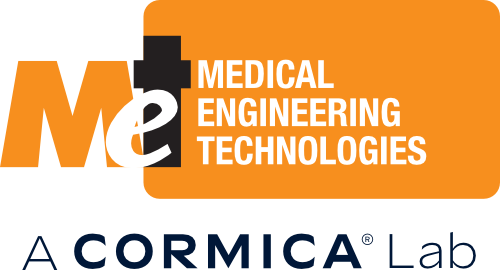Ensuring compliance with transit testing is essential for CE-marked medical devices. At MET, our testing protocols are meticulously crafted to align with the comprehensive standards of ISO 11607-1, focusing on the rigorous assessment of materials, sterile barrier systems, and overall packaging integrity for terminally sterilized medical devices.
Transit testing for medical devices is crucial to ensure that products withstand the physical demands of shipping and handling without compromising safety or functionality. This testing helps identify potential hazards such as vibrations, impacts, and pressure changes that could affect sterile barriers and packaging integrity. Ensuring that medical devices arrive at their destination in perfect condition is essential for patient safety and regulatory compliance.
1. Key Standards and Protocols
We prioritise ASTM D4169 and ASTM D7386 for their extensive coverage and applicability to our testing capabilities. These standards are followed by ISTA Procedure 3A and ISTA 3B. Although capable of conducting most associated tests, our non-membership in ISTA currently restricts us from issuing ISTA-branded certifications.
Currently these four standards are those that are both FDA recognized and ISO 11607-1 approved, and as such are used to validate medical device packaging.
Testing Protocols Comparison
| ASTM D4169 Distribution Cycle 13 | ASTM D7386 TS-4 | ISTA 3A (Standard Package) | ISTA 3B (Standard Package - Under 91kg) |
|---|---|---|---|
| Conditioning | Conditioning | Pre-Conditioning | Pre-Conditioning |
| Handling / Drops | Handling / Drops | Conditioning (Optional)* | Conditioning (Optional) |
| Loose Load (Sine) Vibration | (Random) Vibration with Top Load | Handling / Drops | Tip Over Test (Optional) |
| Low Pressure (Optional) | Low Pressure (Optional) | (Random) Vibration with Top Load | Handling / Drops |
| Vehicle - Truck (Random) Vibration | Handling / Drops | (Random) Vibration without Top Load | (Random) Vibration with Top Load |
| Vehicle - Air (Random) Vibration | (Random) Vibration without Top Load | (Random) Vibration Under Low Pressure (Optional) | Concentrated Impact (Optional) |
| Concentrated Impact (Optional) | Handling / Drops | Handling / Drops | Handling / Drops |
| Handling / Drops | Concentrated Impact (Optional) |
2: Conditioning
Pre-Conditioning Environments: To simulate real-life transport conditions, our testing regimen includes a variety of pre-conditioning environments. These are designed to prepare the package by exposing it to extreme and varied climates that a package might encounter during transit.
Common packaging standard include:
- ASTM D4332 - Standard Practice for Conditioning Containers, Packages, or Packaging Components for Testing
- ASTM F2825 - Standard Practice for Climatic Stressing of Packaging Systems for Single Parcel Delivery
Our standard conditioning processes are tailored to meet the specific requirements of each testing standard. These range from temperature extremes to varying humidity levels, ensuring that the package withstands all potential transport stresses.
Typical Conditioning Parameters:
- Standard: +23°C, 50% Relative Humidity
- Tropical / Hot, Humid:
- (ASTM) +40°C, 90% Relative Humidity
- (ISTA) +38°C, 85% Relative Humidity
- Desert / Extreme Heat, Dry: +60°C, 15% Relative Humidity
- Frozen Storage / Severe Cold:
- (ASTM) -20°C, Uncontrolled Humidity
- (ISTA) -18°C, Uncontrolled Humidity
Other pre-conditioning options are available upon request.
For compression tests under ASTM D4169, note that standard load factors apply only in typical test atmospheres. Packages conditioned in differing environments require a user-determined compressive load factor to accurately simulate warehouse and vehicle stacking effects. We recommend clients conduct a detailed risk assessment to customize these factors for their specific packaging systems.
3: Assurance Levels and Other Test Parameters
Assurance Levels: MET's testing services (Under the ASTM Standards) are categorized into different assurance levels to meet the specific regulatory requirements and risk profiles of our clients:
- Level I: High Assurance for Sterile Medical Devices
- Level II: Standard Assurance, typically for Non-Sterile Devices
- Level III: Requires additional justification through product-specific risk assessments.
Examples of How Assurance Levels affect Test Parameters (ASTM D4169 Example).
Loose Load Vibration
- Assurance Level I: 60 Minutes (30 Base Down, 15 Side Down, 15 End Down)
- Assurance level II: 40 Minutes (20 Base Down, 10 Side Down, 10 End Down)
- Assurance Level III: 30 Minutes (15 Base Down, 7:30 Side Down, 7:30 End Down)
Drop Testing (Shipper under 9.1kg)
- Assurance Level I: 610mm, 1220mm Final Drop
- Assurance Level II: 381mm, 762mm Final Drop
- Assurance Level III: 229mm, 458mm Final Drop
Our approach is collaborative, working closely with clients to determine the appropriate level of testing based on their product’s capabilities, regulatory requirements, and specific industry risks. This tailored testing ensures that all devices, whether sterile or non-sterile, receive the precise level of scrutiny required for regulatory compliance and market success.
4. Optional Tests based on specific Risk Factors
Concentrated Impact Testing (ASTM D6344):
Concentrated impact testing evaluates a package's resistance to sharp, focused impacts—similar to those from box corners or forklift tines. This test is essential for lightweight single-wall corrugated containers (under 275 Burst or 44 ECT) and packages or unitized loads wrapped in plastic film, ensuring they withstand punctures during handling and transit.
High Altitude Testing (ASTM D6653 / D6653M):
High Altitude Testing simulates the low-pressure conditions of air transport using a vacuum chamber. This test is crucial for products sensitive to low pressure, such as non-porous pouches, to verify that they maintain integrity and performance during air shipments.
